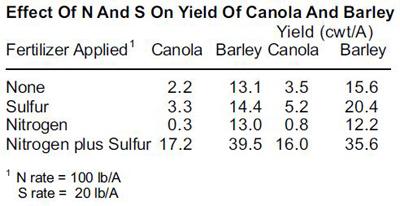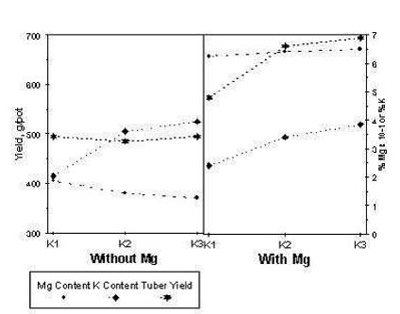In the 19th century, the German scientist Justus von Liebig formulated the Law of the Minimum, which states that if one of the essential plant nutrients is deficient, plant growth will be poor even when all other essential nutrients are abundant.
The Law of the Minimum takes on added importance when fertilizer prices — especially of nitrogen (N) and phosphate (P₂O₅) products — are high. This may tempt some growers to reduce or even eliminate applications of micronutrient or secondary nutrient fertilizers. But von Liebig’s law tells us clearly that if a soil is deficient in, say, magnesium, yields will be depressed regardless of how much N, phosphorus (P) and potassium (K) product you apply.
Such a course of action doesn’t make sense at any time, but can be especially ill-considered during periods of elevated prices of N-P-K products. Let’s look at what can happen when a soil is deficient in magnesium or sulfur (or both) — but the grower elects to omit these nutrients because he or she thinks fertilizer dollars are better spent on N-P-K products.
Potassium-Magnesium Interaction

Affect of nitrogen and sulfur on yield of canola and barley
Agronomists and plant nutritionists have long known of the interaction between these two nutrients. Applications of potash (K) fertilizers reduce a plant’s ability to absorb magnesium. The figure below clearly demonstrates the effects of K and magnesium fertilizers on a soil that’s low in both these nutrients.
Affect of K & Magnesium on Potato Yield
When magnesium was left out of the fertility program (left side of the graph), there was no yield response to added potash because magnesium deficiency depressed yields. Only when both these nutrients were applied together were yields increased — a perfect example of the Law of the Minimum. If a customer purchased and applied an N-P-K product and got results like those shown on the left side of this graph, that customer would not be happy — especially if he or she paid a high price for that fertilizer.
The data in the table below show similar results with respect to the nutrients N and sulfur.
Affect of N & Sulfur on Yield of Canola & Barley

Potassium-magnesium interaction
On this soil, which was very deficient in sulfur, the application of N alone produced no yield increase, and, especially in the case of canola, even decreased yields. Applying sulfur by itself was also largely ineffective. The results achieved when both these nutrients were applied together offer another clear example that the Law of the Minimum works. In these examples, a customer who purchased N only — and left out sulfur to “save” some money — would be a very disappointed customer. If the customer paid a high price for the N, that goes double.
So, the basic truths of profitable fertility practices are as sound today as ever:
- Lowering inputs — such as cutting back on fertilizer rates — can lead to lower yields and profits.
- Optimum fertility helps ensure maximum economic yield and lessens the effects of adverse weather, diseases and pests.






Post a comment
Report Abusive Comment